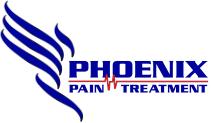A trigger point injection is the injection of medication directly into areas within muscles that are sources of pain. This type of muscular pain may be a symptom of a variety of conditions.
Trigger points, are “points” of tightness, tenderness, or pain in a muscle that may affect functional muscular movement and if chronic can affect the way you lead your life.
The drugs included in trigger point injections may be local anesthetics such as lidocaine or procaine.
Trigger point injections sometimes contain Botox (or botulinum toxin A) into a trigger point. Botox prevents muscle contraction and promotes muscular relaxation at the cellular level and is an effective treatment for pain or discomfort caused from a trigger point.
How Are Trigger Point Injections Performed?
Trigger point injections are given in our pain clinic or at our Scottsdale Surgical center at 9377 East Bell Road, Scottsdale Arizona. You will be in a seated position and the Interventional Pain doctor will either locate the trigger points by palpation or by the use of ultra sound.
The skin above the trigger point is cleaned with an alcohol wipe, and the medication is inserted via hypodermic needle. Most of our patients say that they didn’t even feel the needle but a very slight pressure type feeling when the medication was administered at worse it felt like a regular shot.
The average trigger point injection procedure lasts several minutes as usually there are several trigger points in the same area that need to be injected.
We advise light exercise or stretching of the affected muscle, to help ease the the trigger point while the tissue is relaxed by the injection.
I heard you can get trigger point injections for Fibromyalgia and headaches? Is that true?
If you suffer with fibromyalgia and radiculopathy, trigger point injections may relieve both muscle tension and the pain you are suffering with.
Recently trigger point injection is in the treatment of certain types of headache especially tension headaches and cluster headaches. This is due to trigger points in the muscles of the head and/or neck contribute to or cause headache pain.
Will the Occipital Nerve Block hurt?
The procedure involves inserting a needle through skin and deeper tissues. So, there is some pain involved. However, the skin and deeper tissues are numbed with a local anaesthetic using a very thin needle during the performance of the block.
Will I be “put out” for the Occipital Nerve Block?
No. This procedure is done with a small thin needle, usually without any sedation. There is local anaesthetic within the injection.
How is the Occipital Nerve Block performed?
It is done with the patient seated or lying down. The skin and hair of the back of the head are cleaned with antiseptic solution and then the injection is carried out.
What should I expect after the Occipital Nerve Block?
Immediately after the injection, you may feel that your pain may be gone or quite less. This is due to the local anaesthetic injected. This will last only for a few hours. Your pain may return and you may have a sore head for a day or two. This is due to the mechanical process of needle insertion as well as initial irritation from the steroid itself. You should start noticing a more lasting pain relief starting the third day or so.
What should I do after the Occipital Nerve Block?
You will rest for a while in the office. Most patients can drive themselves home. The patient to take it easy for several hours after the procedure. You may want to apply ice to the injected area. You can perform any activity you can tolerate.
Can I go to work to work the next day?
Unless there are complications, you should be able to return to work the next day. The most common thing you may feel is a sore head at the injection site.
How long does the effect of the medication last?
The immediate effect is usually from the local anaesthetic injected. This wears off in a few hours. The steroid starts working in about three to five days and its effect can last for several days to a few months.
How many Occipital Nerve Blocks do I need to have?
It varies. The injections are done about one week apart only if needed. If the first injection does not relieve your symptoms in about a week to two weeks, you may be recommended to have a second injection. If you respond to the injections, you may be recommended for additional injections when the symptoms return.
Can I have as many Occipital Nerve Blocks as I need?
With some exceptions, in any given six-month period, experts will generally not perform more than three occipital nerve blocks. This is because giving more injections could increase the likelihood of side effects from the steroids that are injected. Likewise, if the patient needs more frequent injections, other treatments should probably be considered.
Will the Occipital Nerve Blocks help me?
It is difficult to predict if the injection will help you or not. Generally speaking, patients who have recent onset of pain may respond much better than the ones with a longstanding pain. Usually the first injection is as much a test as a treatment. The first block will confirm that the occipital nerves are involved in the pain and be helpful. Or it will not help and the occipital nerves will not be suspected as part of the pain.
What are the risks and side effects of Occipital Nerve Blocks?
Generally speaking, this procedure is safe. However, with any procedure there are risks, side effects and possibility of complications. The most common side effect is temporary pain at the injection site. Other uncommon risks involve infection, bleeding, worsening of symptoms etc. Fortunately, serious side effects and complications are uncommon.

